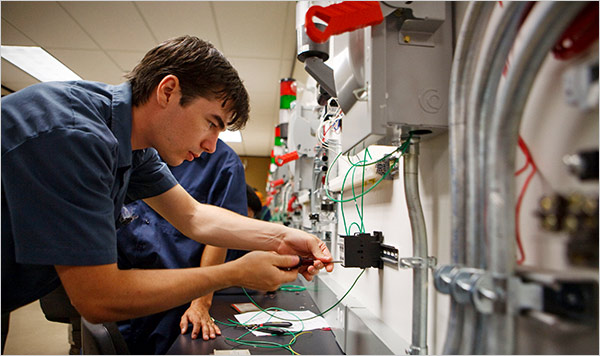
A look at some of the trends presenting challenges and creating opportunities for commercial real estate.
AN EARLIER ARTICLE, “State of Commercial Real Estate 2018: Threats and Opportunities” explored some of the challenges facing those sectors today. This follow-up piece examines some general trends that will impact commercial real estate overall.
General Trends
The first of these is an emerging demographic life stage: people older than 65, but not yet elderly. This group has been described as “the young old,” “geri-actives” and “OWLs” (older, working less). Real estate opportunities for this group could include Club Med-style resorts, with a balance of wellness programs and other activities, as well as specialized apartments in urban areas with amenities ranging from bike racks to on-call doctors.
Another general trend is the so-called gig economy, the growth of independent contractors. Many work from home and provide services for individuals and/or act as subcontractors for companies. These services include part-time legal work, accounting, customer service and IT support. The gig economy presents a threat to real estate, since companies using contractors rather than employees may require less space. Yet it also presents an opportunity for more coworking environments, which many gig workers prefer to traditional offices.
Technological Trends
New and changing technology, including e-commerce, automation, 3-D printing, virtual reality, big data and even artificial intelligence, will also have big impacts on commercial real estate.
E-commerce. While the shift in how and where people buy things has negatively impacted the retail sector, it is benefitting other niche real estate segments, including data centers, other types of industrial properties and cell towers.
Automation. Autonomous cars will eventually have a huge impact on real estate. Parking structures could become obsolete, and homes may no longer need garages. Streets could be narrowed as the need for street parking disappears; parking lanes could be replaced by bike or bus lanes, wider sidewalks, open space or even new development.
People will probably use autonomous cars as a service, rather than owning their own cars, which makes sense, because most cars are used less than 5 percent of the day. But most, if not all, of these changes will probably take place in the far rather than the near future.

Another automation trend, which has already been underway for some time, involves the use of robots in warehouses. The next generation of collaborative robots, or “cobots,” will feature cameras, touch sensors and somewhat humanlike features, enabling them to safely work alongside and collaborate with humans.
Read: The Key to Successful Coworking Space Design is Helping People Feel Less Lonely
3-D Printing. As 3-D printing becomes more prevalent, certain products will no longer require warehousing, as they will be manufactured on-site. During the past 10 years, the price of low-end 3-D printers has come down from around $18,000 to under $500. Incredibly, they are also now 100 times faster.
Virtual Reality. Beyond the video game industry, virtual reality hasn’t really taken off yet. But it very well could in the near future, as the quality improves, and as it includes more augmented reality, which combines actual images with virtual creations. Some architects and brokers are already using virtual reality presentations.
Augmented reality may also impact leisure travel – imagine a $10 tour of the Grand Canyon – and business travel, as virtual conferences and meetings become more prevalent. And special glasses will enable construction workers to see construction drawings superimposed on actual spaces.
Big Data. Smartphones and the internet have made information more abundant and valuable. Google knows what people search for, Facebook knows what they share and Amazon knows what they buy. Data mining presents an interesting opportunity for the real estate industry. Mall owners can track shoppers’ habits, apartment building owners can track residents within their buildings and office landlords can track workers throughout public spaces.
Artificial Intelligence. This technology is also improving exponentially. After tracking occupants’ whereabouts, building owners can then create algorithms to predict future usage.
One example is NVidia, a company specializing in visualization software, which has installed cameras to recognize the food people are eating in its cafeteria and then charge them accordingly, with no lines or cashiers. The company also tracks employees’ arrivals and departures to determine optimal heating and cooling needs.

Retail landlords are attempting to use AI with special apps that lure shoppers with mall-wide discounts. A landlord is then able to track a shopper’s spending habits and steer them to specific retailers. Even law firms may need less space, as smart computers could provide rudimental legal advice.
Read: 6 Great Apps to Help Designers Work More Efficiently
Displacing People?
All of these technological advances raise an important question: Will technology actually be an asset that improves people’s performance in the workplace, or will it just remove people from the workforce? There is a name for this potential trend: “robogeddon.” Although only one occupation, the elevator operator, appears to have been completely obliterated by technology, many businesses will clearly continue to be affected by automation and other technological advances. One fairly recent example: Several years ago, UPS created a GPS algorithm that provided distribution routes for its trucks, which minimized waiting times for left turns. This was a huge success for UPS; the company now needs fewer trucks, but it also needs 1,100 fewer drivers.
What can society do to help all those displaced people going forward? This is a very big question.
The Future Workforce
The academic world has already spoken up on this subject, introducing the concept of “universal basic income.” (Mark Zuckerberg talked about this in his 2017 Harvard commencement address.) The theory is that a portion of the excess profits from technology should be used to fund the salaries of displaced workers.
Other strategies revolve around education. First, the U.S. needs to increase its emphasis on science and math at the very early stages of the learning process. Schools need to go beyond simply attempting to make science “fun.” Educators must create new curriculum paths that encourage all students to study science, not just those who will become scientists, enabling everyone to become employable in a tech-centered workplace.
Read: How to Differentiate Your Design-Build Firm
Second, the nation should consider reallocating some of its funding for higher education by directing more dollars, both private and public, toward technical schools and community colleges. These schools can best retrain people who have lost their jobs because of advances in technology. Traditional colleges and universities are important; they are one of America’s biggest assets, but they are not for everyone, and they are very expensive.

For better or for worse, the nation has overextended itself during the past few decades with college spending. Historically, only 25 percent of 18- to 24-year-olds have gone to college, but during the past 20 years, that number has grown to nearly 35 percent. The result has been a growth in liberal arts college matriculation and a subsequent increase in the number of graduates competing for scarcer and scarcer non-tech jobs.
This growth has led to expensive overbuilding of campuses and excess capacity. Consolidating some of these colleges would free up unused properties to become technical training centers for the people who will be needed to work in tomorrow’s technology-dominated world. These technical training centers could offer ongoing benefits and provide “lifelong” learning opportunities for people of all ages because, as the world changes so quickly, individuals may now need to begin new careers many times over the course of their lives.
New Opportunities
Finally, circling back to commercial real estate, all of these trends can be seen as threats, but they also create new opportunities. The “secret” that will enable commercial real estate professionals to take advantage of these trends is to be as knowledgeable as you can, by always observing the world around you. Most importantly, you must always be open to new ideas, so you can take full advantage of these very exciting times in which we now live.
Bill Hunt (bhunt@elmhurstgroup.com) is president, Elmhurst Group, and Governor and chairman, NAIOP Research Foundation.
This article was originally published in the summer 2018 issue of Development magazine. It appears here with permission from the publisher, NAIOP.
Design and build better with Fohlio. Schedule a demo or book a consultation with one of our account managers to explore these features today.
Also published on Medium.
Expore Fohlio
Learn how to:
- Save days of work with faster specification
- Create firm-wide design standards
- Automate and centralize procurement
- Keep your whole team on the same Page
- Manage product data
- Track budget against cost in real time.
- Prepare for asset valuation
Published Oct 10, 2018

